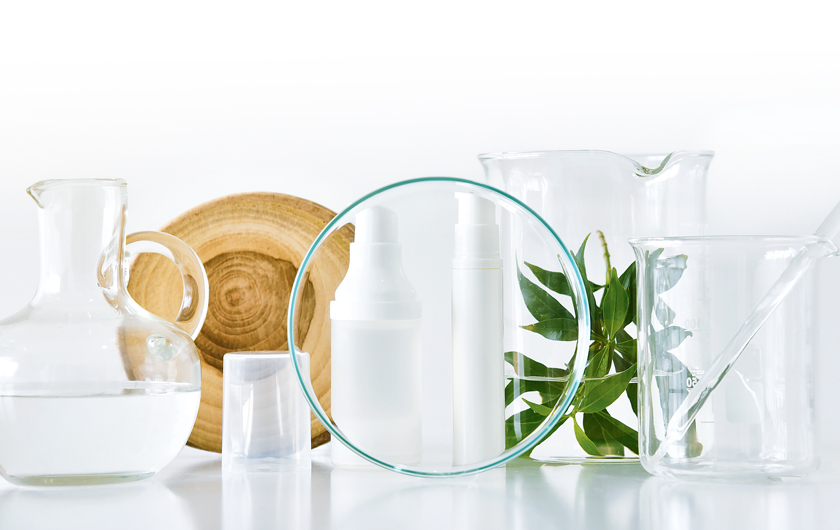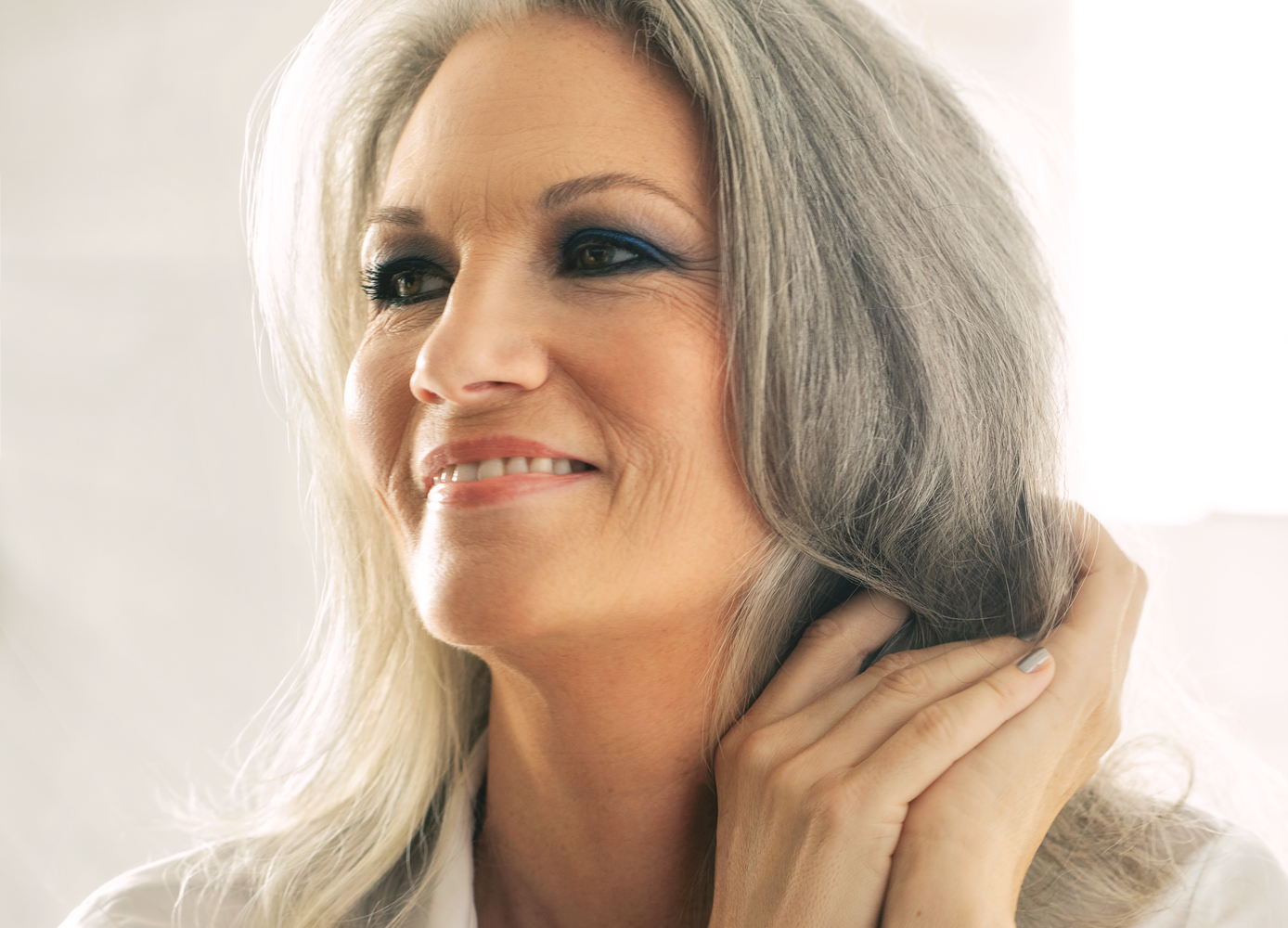Dark spots, hair in new places, and the occasional breakout can sometimes gnaw at your self-confidence. Here’s how to tackle these issues head-on.
By Mariève Inoue
You often hear about wrinkles, thinning, and decreased elasticity, but as time passes, there are other, lesser-known ways your skin changes, such as your complexion becoming uneven, scars taking longer to heal, or a shift in body and facial hair.
“These changes are mostly due to aging of the bone mass and tissues, but external factors can accelerate them,” explains Dr. Joseph Doumit, a dermatologist at the Union MD clinic. Among these factors are sun exposure, smoking, and pollution.
“Until the age of about 20 or 25, your skin is in perfect balance,” says Nancy Labonté, a skin-care and cosmetics specialist at IDC Dermo. “From then on, your skin’s antioxidants and natural moisture begin to decrease, it doesn’t breathe as well, and it has less energy.”
Not everyone experiences these changes at the same time or in the same way. “For women, hormonal changes linked to taking the pill, pregnancy, menopause, or other biological factors affect the skin’s aging process, signs of which usually appear earlier than in men,” Doumit says. Aging can also vary tremendously from one person to the next. Although it’s a natural process, there are ways to reduce or alleviate some of its effects.
Hyperpigmentation
What it is: Often called “age spots” or “sun spots,” dark spots are created by an excess of pigmentation. They are often found on the face, hands, neck, and arms, and are caused by cumulative exposure to UV rays over the years. “Most sun damage occurs before the age of 20 but only starts showing in your 40s or 50s,” says Dr. Geneviève Thérien, a dermatologist at Dermapure clinics. Certain medications or hormonal changes can also make you more prone to hyperpigmentation.
How to prevent it: “The best strategy is to wear sunscreen 365 days a year,” Labonté says. Your skin is exposed to the sun as soon as you step outside, and clouds or windows don’t keep UV rays from reaching your skin. Look for an SPF of at least 30 for everyday use.
However, “when you’re doing outdoor activities, opt for a broad-spectrum sunscreen with an SPF of 50 or higher for adequate protection,” Thérien recommends. Don’t forget to cover up: a hat and sunglasses are essential. “Ideally, these habits should be adopted from childhood, but since the effects of UV rays are cumulative, it’s never too late to start protecting yourself.”
Solutions
At home: Exfoliation is the key to reducing the appearance of hyperpigmentation. “Use an exfoliating mask once a week or a daily night cream that contains fruit acids to get rid of dead cells and debris on the surface of your skin,” Labonté suggests. AHAs (alpha-hydroxy acids) such as glycolic acid, kojic acid, lactic acid, and mandelic acid should be used at night, as they can make skin more sensitive to the sun. Vitamin A derivatives such as retinol and retinaldehyde also promote cell turnover, helping diminish the appearance of dark spots.
At the salon or clinic: Consider chemical peels or pulsed light, pigment laser, or semi-ablative laser treatments. “On a smaller scale and as a course of treatment, peels can even out skin tone and reduce the intensity of spots,” says Catherine Paradis, a technical training coordinator and technician at Dermapure clinics. Pulsed light is particularly effective for dark spots on a fair complexion.
“Some treatments may present risks such as burns,” Thérien cautions. “More than one session may be necessary, and spots frequently return. If you notice a spot that changes, looks unique or suspicious, or is different from the others, it’s crucial to have it examined by a doctor before undergoing any treatments, to avoid delaying a potential melanoma diagnosis.”
Beyond Skin Care
• Avoid the sun by seeking shade and wearing UV-protective clothing, which is gaining popularity.
• Reduce your use of products containing fragrance or essential oils, which can make your skin more sensitive to the sun.
Unwanted Hair
What it is: During menopause, women sometimes see new hairs pop up on their cheeks, upper lip, chin, or neck. “This is due to a decrease in estrogen, which, until menopause, counterbalances masculine hormones called androgens,” Labonté explains. This can lead to new hair growth. “Facial skin has many estrogen receptors, making it particularly sensitive to a decrease in this hormone,” Thérien says.
Solutions
At home: Temporary hair removal methods such as waxing, shaving, electrical depilation, hair removal cream treatment, and tweezing can help. “It’s a misconception that hair grows back thicker,” Thérien says. You can therefore shave or remove unwanted hair—if you choose to—with peace of mind.
At the salon or clinic: For more permanent results, you can opt for laser or IPL (intense pulsed light) treatments, or electrolysis. Laser and pulsed light treatments use an intense light to destroy the root of each hair. “This procedure is designed for women with dark hair and a light complexion,” Doumit says. As for electrolysis, it consists of inserting a small needle into the hair follicle to destroy its root and prevent it from growing back. The advantage of this technique is that it works on hairs of all colours—including white, blonde, and red.
Perimenopausal Acne
What it is: “Just like superfluous facial hair, acne around and during menopause is caused by a decrease in estrogen,” Thérien says. According to Labonté, the situation can be exacerbated by factors such as stress or a lack of sleep. “When skin ages, cell turnover slows down, making it easier for pores to become obstructed, which can lead to acne,” she says. But adult acne is different from what teenagers deal with: while you may experience fewer pimples, they are often bigger and deeper, according to Thérien. They can also take longer to heal.
Solutions
At home: Avoid using harsh products on your skin. “Skin is often drier and more sensitive during menopause, so it’s important to choose gentle products,” Thérien says. Cleanse your skin twice a day and avoid scrubs, as well as night creams with overly rich consistencies. Products that contain benzoyl peroxide, salicylic acid, glycolic acid, or vitamin A derivatives such as retinol can also help.
At the salon or clinic: “Chemical peels can sometimes help improve acne, but only temporarily and in mild cases,” Thérien says. Paradis suggests another option to be discussed with a qualified technician: start with an IPL treatment (such as blue light) and alternate with glycolic acid peels.
Beyond Skin Care
• Avoid touching your face and popping your pimples.
• “Drinking a lot of water, eating a balanced diet and being physically active can help activate your metabolism,” Labonté advises. “Your skin will reap the benefits.”
Photo: iStock/Artfully79.






